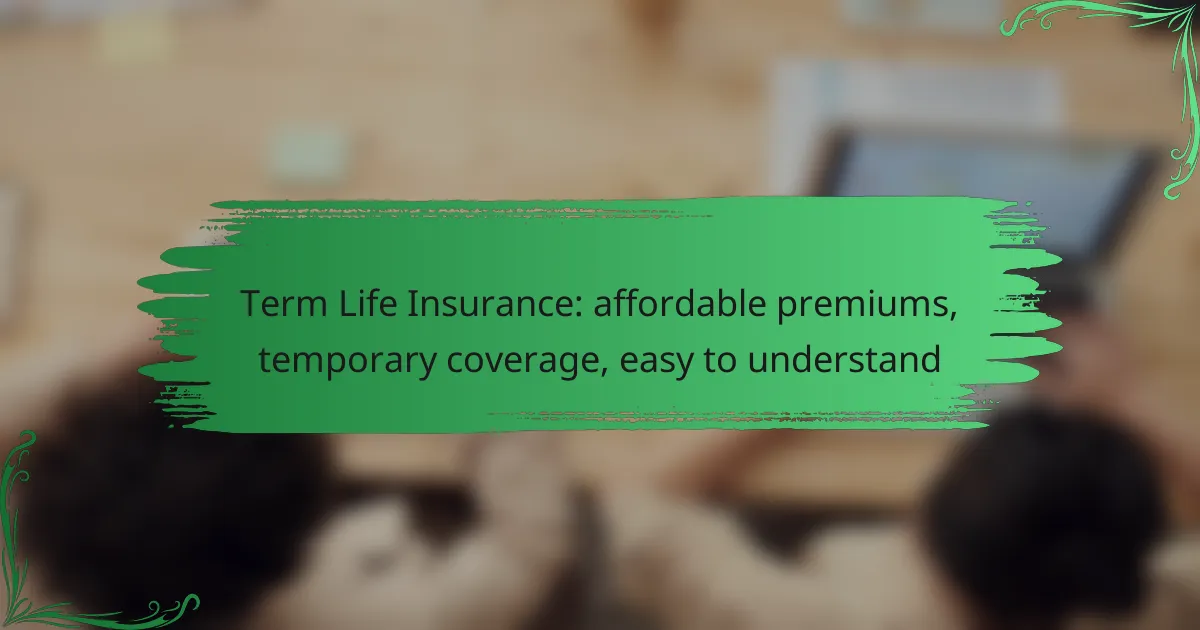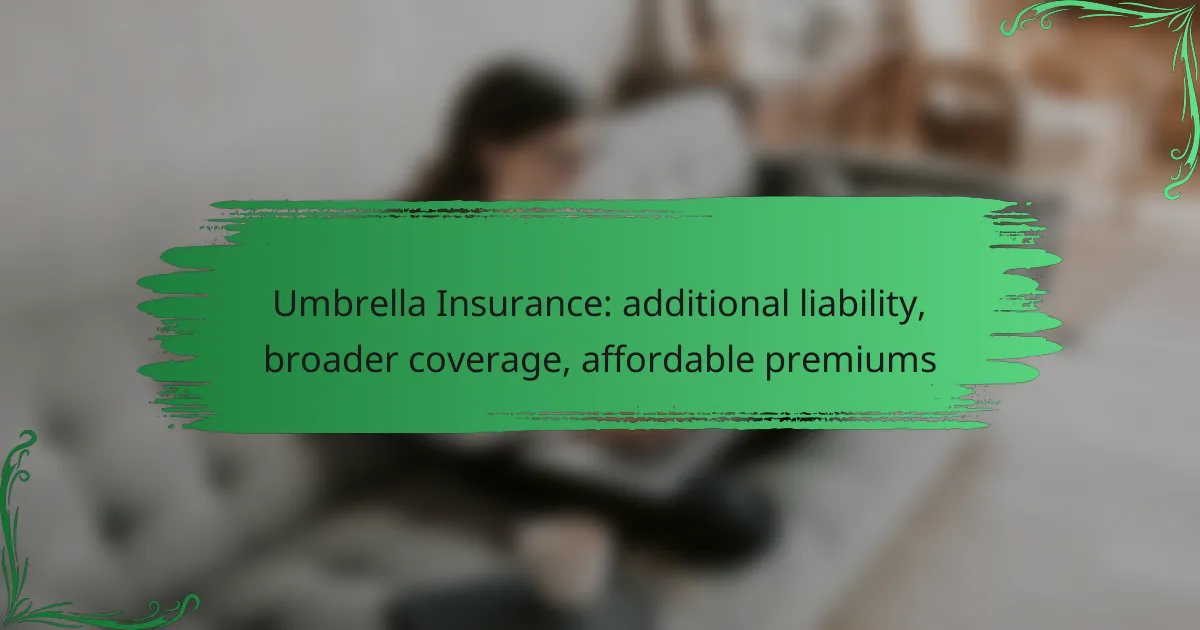Term life insurance provides an affordable way to secure temporary coverage, making it an ideal choice for those looking for straightforward financial protection. With easy-to-understand policies, it allows individuals to safeguard their loved ones for a specific period without the complexities associated with permanent life insurance. By evaluating your coverage needs and comparing quotes, you can find a plan that fits your budget and requirements.

What are the benefits of term life insurance in the UK?
Term life insurance in the UK offers several advantages, including affordable premiums, temporary coverage, and straightforward policies. These features make it an appealing option for individuals seeking financial protection for a specific period without the complexities of permanent life insurance.
Affordable premiums
One of the primary benefits of term life insurance is its affordability. Premiums are typically lower compared to whole life insurance because the coverage is temporary and does not accumulate cash value. For many individuals, this means securing substantial coverage for a fraction of the cost, often ranging from £10 to £30 per month for healthy applicants.
When considering term life insurance, it’s crucial to compare quotes from different providers. Many insurers offer online calculators to help estimate premiums based on age, health, and coverage amount. This can help you find the most cost-effective option that meets your needs.
Temporary coverage options
Term life insurance provides temporary coverage, usually ranging from 5 to 30 years, allowing policyholders to choose a term that aligns with their financial responsibilities. This is particularly beneficial for those with specific obligations, such as a mortgage or children’s education, that may diminish over time.
It’s important to assess your needs carefully when selecting the term length. If your financial responsibilities are likely to change, consider a policy that allows for renewal or conversion to permanent insurance at the end of the term.
Easy to understand policies
Term life insurance policies are generally straightforward and easy to understand, making them accessible for most consumers. The terms typically outline the coverage amount, duration, and premium payments without complex jargon or hidden clauses.
When reviewing a policy, focus on key elements like the death benefit, exclusions, and renewal options. This clarity allows you to make informed decisions without confusion, ensuring you choose a policy that best fits your financial goals.

How to choose the right term life insurance?
Choosing the right term life insurance involves assessing your coverage needs, comparing quotes from different providers, and evaluating the policy terms and conditions. This process ensures you find an affordable premium that meets your temporary coverage requirements.
Assess your coverage needs
Start by determining how much coverage you require based on your financial obligations. Consider factors such as outstanding debts, mortgage payments, and future expenses like children’s education. A common rule of thumb is to aim for a coverage amount that is 10 to 15 times your annual income.
Next, think about the duration of coverage you need. Term life insurance typically offers coverage for periods ranging from 10 to 30 years. Choose a term that aligns with your financial responsibilities, such as until your children are financially independent or your mortgage is paid off.
Compare quotes from providers
Gather quotes from multiple insurance providers to find the best rates. Online comparison tools can help streamline this process, allowing you to view different premiums side by side. Pay attention to the coverage amounts and terms offered, as these can vary significantly between companies.
When comparing quotes, consider the insurer’s financial strength and customer service ratings. Look for providers with strong ratings from agencies like A.M. Best or Standard & Poor’s, as this indicates their ability to pay claims reliably.
Evaluate policy terms and conditions
Carefully read the terms and conditions of each policy before making a decision. Look for important details such as renewal options, conversion privileges, and exclusions. Some policies may allow you to convert to a permanent policy later, which can be beneficial if your needs change.
Also, check for any additional riders that can enhance your coverage, such as accidental death benefits or critical illness coverage. These options can provide extra protection for a relatively low additional cost.
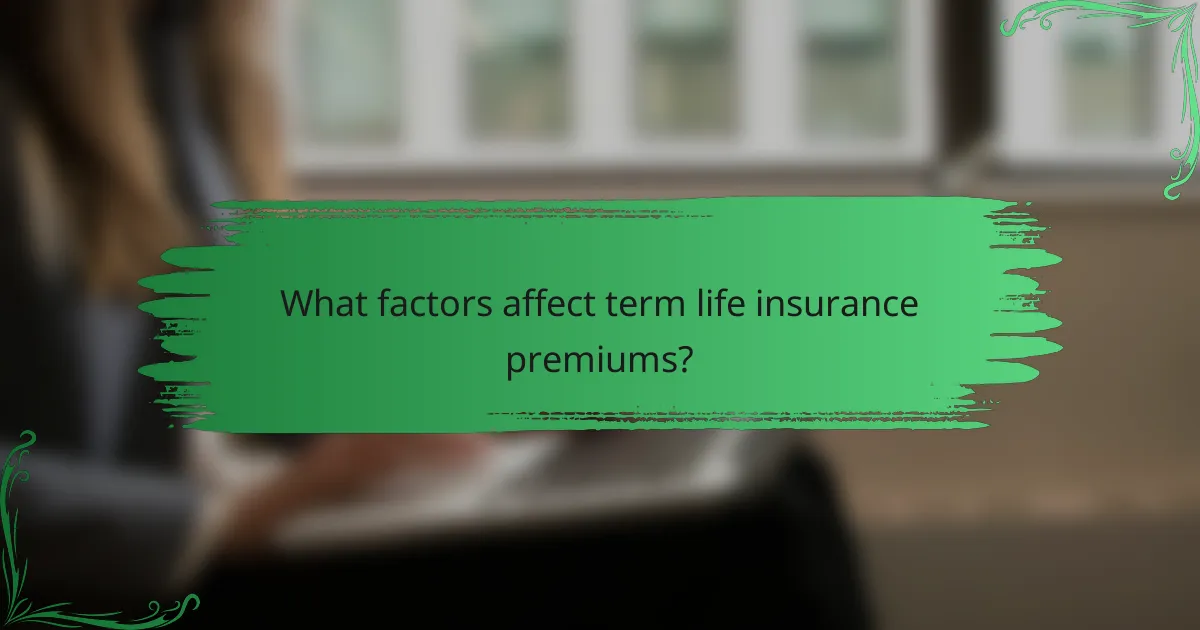
What factors affect term life insurance premiums?
Term life insurance premiums are influenced by several key factors, including the insured’s age, health status, coverage amount, term length, and lifestyle choices. Understanding these elements can help you find more affordable premiums and tailor your policy to your needs.
Age and health status
Your age and health status are primary determinants of term life insurance premiums. Generally, younger individuals tend to pay lower premiums because they are perceived as lower risk. Additionally, insurers assess health conditions, such as chronic illnesses or smoking habits, which can significantly increase costs.
For example, a 30-year-old non-smoker may pay a fraction of what a 50-year-old smoker would for the same coverage. It’s advisable to undergo a health examination to get the most accurate premium quote.
Coverage amount and term length
The coverage amount and the length of the term you choose directly impact your premium costs. Higher coverage amounts typically result in higher premiums, as the insurer’s risk increases. Similarly, longer terms can lead to increased costs due to the extended risk period.
For instance, a $500,000 policy for a 20-year term will generally cost more than a $250,000 policy for a 10-year term. Carefully evaluate your financial needs to select an appropriate coverage amount and term length that balances cost and protection.
Lifestyle choices and habits
Your lifestyle choices and habits play a crucial role in determining your term life insurance premiums. Factors such as smoking, alcohol consumption, and participation in hazardous activities can lead to higher rates. Insurers often require disclosures about these habits during the application process.
To potentially lower your premiums, consider adopting healthier lifestyle changes, such as quitting smoking or reducing alcohol intake. These adjustments can not only improve your health but also make you a more attractive candidate for lower insurance rates.
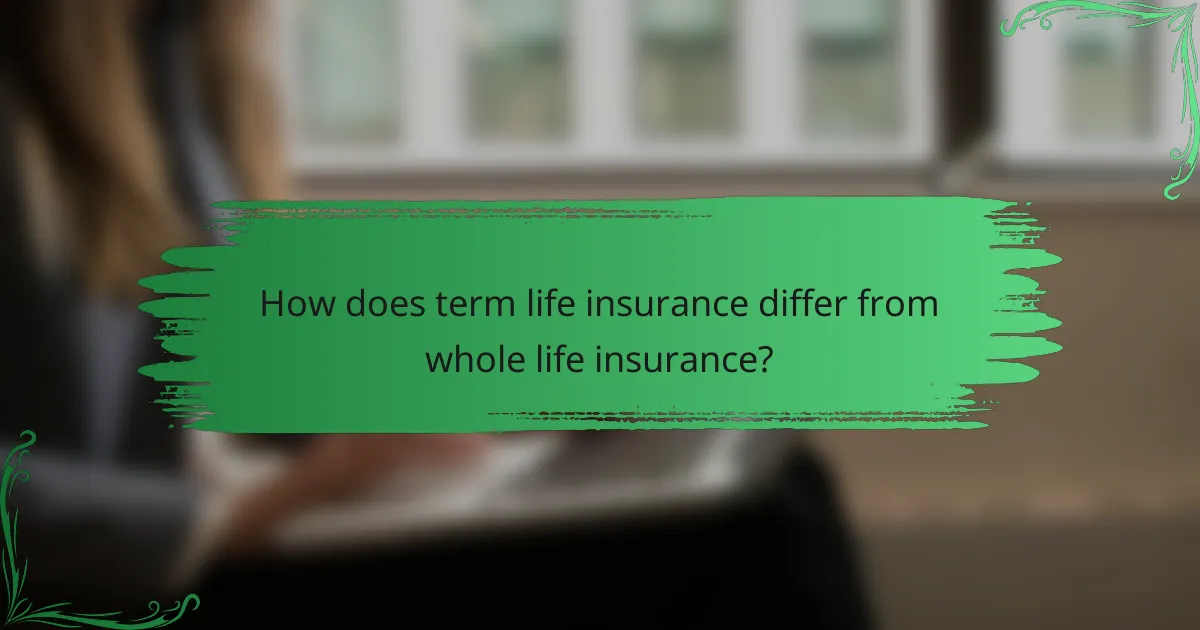
How does term life insurance differ from whole life insurance?
Term life insurance provides temporary coverage for a specified period, typically ranging from 10 to 30 years, while whole life insurance offers lifelong protection with a cash value component. The key differences lie in the duration of coverage, premium costs, and the potential for cash value accumulation.
Coverage duration
Term life insurance is designed to cover you for a set period, which can be tailored to match specific financial obligations, such as a mortgage or children’s education. If you pass away during the term, your beneficiaries receive a death benefit. However, if the term expires and you outlive it, there is no payout, and coverage ends unless renewed.
Premium structure
Term life insurance generally features lower premiums compared to whole life insurance, making it an affordable option for many individuals. Premiums remain level throughout the term, but they may increase significantly upon renewal or if you choose to convert to a permanent policy. Whole life insurance, on the other hand, has higher initial premiums that remain constant and contribute to the policy’s cash value.
Cash value accumulation
Term life insurance does not accumulate cash value; it is purely a death benefit policy. In contrast, whole life insurance builds cash value over time, which can be borrowed against or withdrawn. This cash value grows at a guaranteed rate and can provide financial flexibility, but it comes at the cost of higher premiums.
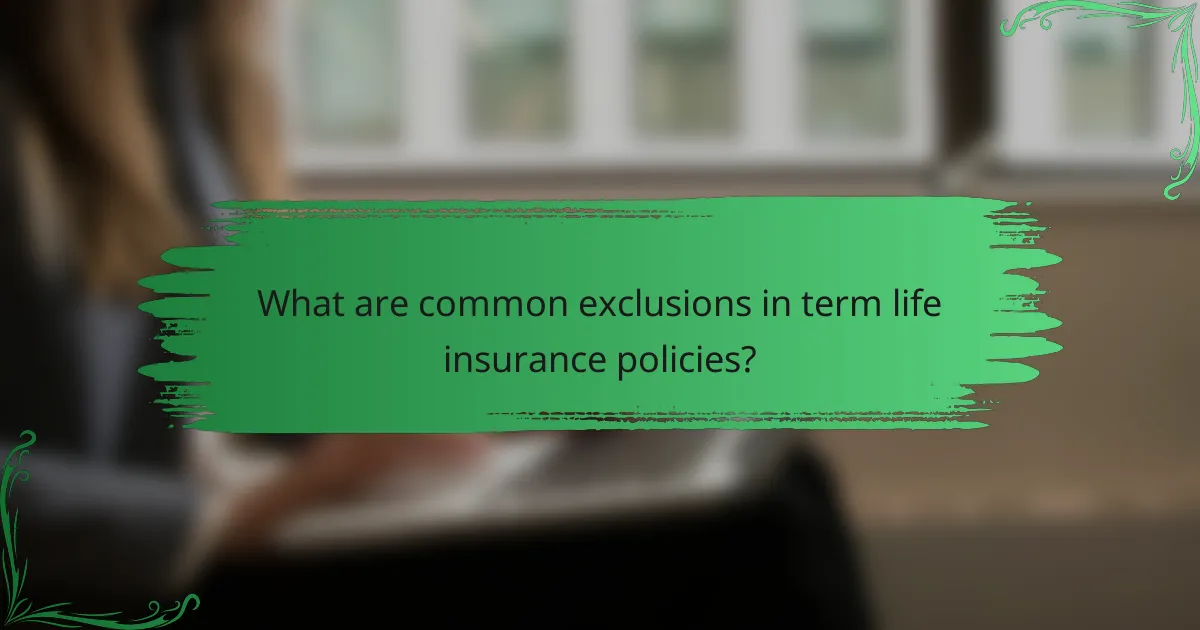
What are common exclusions in term life insurance policies?
Common exclusions in term life insurance policies often include specific circumstances under which the policy will not pay out. Understanding these exclusions is crucial for policyholders to ensure they have adequate coverage and are aware of any limitations.
Suicide clauses
Many term life insurance policies include a suicide clause, which typically states that if the insured dies by suicide within a set period, often the first two years, the insurer will not pay the death benefit. After this period, the policy generally pays out as usual, but it’s essential to review the specific terms of your policy.
Policyholders should be aware that this exclusion is designed to prevent individuals from purchasing insurance with the intent of committing suicide shortly thereafter. Always clarify the duration of the suicide clause with your insurer.
Pre-existing conditions
Pre-existing conditions can also lead to exclusions in term life insurance policies. If a health issue existed before the policy was purchased, it may not be covered, especially if it contributes to the insured’s death. Insurers often require full disclosure of medical history during the application process.
For example, if someone has a chronic illness and does not disclose it, the insurer may deny a claim related to that condition. It’s advisable to read the policy carefully and discuss any health concerns with your insurance agent to avoid surprises later.
